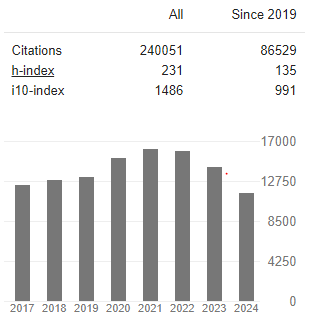Pathophysiological discussions and statistical results between diabetes caused by obesity versus cancers caused by obesity via SD-VMT areas comparison using data collected from 2010 to 2023 and based on space-domain viscoplastic energy model of GH-Method: Math-Physical Medicine (No. 893, VGT #293)
Abstract
Gerald C Hsu
The objective of this methodology article is to assess and compare the risks of developing type 2 diabetes (T2D) and cancers caused by obesity as a single input factor. The study spans a timeframe of approximately 14 years, from 2010 to 2023. The author personally collected and analyzed their input data, although there were limitations in obtaining sufficient lab-tested data between 2010 and 2012. From 2013 to 2018, the data collection methods involved more lab testing and personal data obtained through finger-piercing glucose testing. A more complete and comprehensive dataset was obtained from 2018 to 2023, utilizing laboratory tests, automated glucose sensors, and wearable health devices. Despite these limitations, the annual dataset used in this study is considered adequate for drawing useful and reasonably accurate conclusions.
The author has been diagnosed with T2D since 1996 but has not received any cancer diagnoses. The assessment of cancer risk in this study is conducted using a sophisticated metabolism index (MI) model developed by the author in 2014. This model takes into account factors such as lifetime bad habits, environmental factors, genetic concerns, four metabolic disorders, and six lifestyle details.
To analyze and compare the contribution of T2D (measured through HbA1C levels) and cancer risks based on the single input cause of obesity (measured through body weight, m1), this study utilizes the space-domain viscoplastic energy model from GH-Method: Math-Physical Medicine.
In summary, this research presents two key findings: Firstly, the author conducts two separate analyses to evaluate the impact of obesity on his existing T2D condition and his future risks of developing cancer. The SD-VMT analysis shows that the energy level for T2D and obesity is 110.1, while the energy level for cancers and obesity is only 1.18, representing just 1% of the diabetes energy level. This finding indicates that despite being a T2D veteran of 26 years, the author has not shown any signs of developing cancer. Furthermore, his SD time-zone analysis reveals that 98% of the total energy is concentrated in the Y10-Y13 for T2D and Y10-Y17 for cancers, while only 2% falls in the Y14-Y23 for T2D and Y18-Y23 for cancers.
Secondly, as an exploratory medical research methodology, he considers obesity as the output symptom, with diabetes and cancers being two separate input causes. The SD-VMT energy ratios demonstrate that diabetes accounts for 69% of the total energy, while cancers account for 31%. Although diabetes has twice as much energy as cancers, the disparity is not as substantial as the 99-fold difference observed in the first case. This finding emphasizes that the author's existing diabetes condition is significantly more severe than his risks of developing cancer.



